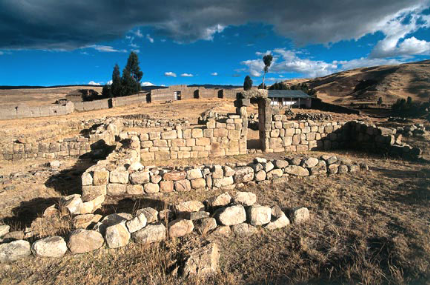Uchkus Inkañan, an ancient archaeological site in Peru, remains a testament to the ingenuity of the Inca civilization. Nestled in the high Andean mountains, this site showcases complex stone structures and agricultural terraces. It reflects the Inca’s mastery over their harsh environment and their sophisticated societal structures. Uchkus Inkañan, less known than the famed Machu Picchu, offers valuable insights into the daily lives and practices of the Inca people.
Get your dose of History via Email
Historical Background of Uchkus Inkañan
Archaeologists stumbled upon Uchkus Inkañan relatively recently. They found it hidden in the Andes, a testament to the Inca’s architectural prowess. The Inca Empire, which built the site, flourished between the 15th and 16th centuries. They were master builders, creating structures that have withstood the test of time. Uchkus Inkañan, though not as well-known as other Inca sites, offers a unique glimpse into their world.
The exact date of Uchkus Inkañan’s construction remains unclear. However, experts believe the Incas built it during their golden age. The site likely served as an agricultural or ceremonial center, integral to the local community. Its discovery has shed light on the Inca’s advanced agricultural techniques and their relationship with the environment.
The Incas were not the only inhabitants of Uchkus Inkañan. After the Spanish conquest, other cultures likely used the site. It stands as a silent witness to the region’s complex history. The site has not been the scene of any known historical events. Yet, it remains an important piece of the Inca legacy.
Uchkus Inkañan’s discovery has not led to widespread excavation. The site remains relatively untouched, preserving its authenticity. This lack of disturbance allows for a more accurate study of Inca engineering and social organization. It also means that much of Uchkus Inkañan’s history is yet to be uncovered.
The site’s remote location has protected it from the ravages of time and human interference. As a result, Uchkus Inkañan stands as a pristine example of Inca ingenuity. It offers a unique opportunity for researchers to delve into the past. The site continues to be a focus for ongoing archaeological study.
About Uchkus Inkañan
Uchkus Inkañan’s architecture is a marvel of engineering. The Incas used local stone to construct their buildings and terraces. They fitted each stone precisely, without the need for mortar. This technique has ensured the structures’ survival through earthquakes and centuries of weathering.
The site features a series of terraces carved into the mountainside. These terraces demonstrate the Inca’s advanced knowledge of agriculture and irrigation. They used them to grow crops at high altitudes, a feat that modern-day farmers still admire.
One of the architectural highlights of Uchkus Inkañan is its water management system. The Incas built channels to direct water from mountain streams to their terraces. This system allowed for efficient irrigation and reflects the Inca’s deep understanding of their environment.
The buildings at Uchkus Inkañan are typical of Inca design. They feature trapezoidal doors and windows, which helped to withstand seismic activity. The site’s layout suggests it had a ceremonial as well as an agricultural function.
Despite its rugged mountain location, Uchkus Inkañan’s construction showcases the Inca’s ability to adapt to their environment. They transported heavy stones across difficult terrain to build this site. Their methods continue to puzzle and impress historians and engineers alike.
Theories and Interpretations
Several theories exist about Uchkus Inkañan’s purpose. Some suggest it was primarily an agricultural site. Others believe it had a significant ceremonial role. The truth likely lies somewhere in between, reflecting the Inca’s combination of practicality and spirituality.
The mystery of Uchkus Inkañan includes its strategic location. It may have served as a lookout or defense point against potential invaders. This theory aligns with the Inca’s known military strategies.
Interpreting Uchkus Inkañan’s structures requires matching them to historical records. The Incas did not leave written records, so researchers rely on Spanish chronicles and oral traditions. This process is complex and ongoing.
Dating Uchkus Inkañan has involved methods like carbon-14 dating and stratigraphy. These techniques help establish a timeline for the site’s construction and use. They also provide a context for the artifacts found there.
The site’s remote location has preserved many of its features. However, this also means that Uchkus Inkañan has not been as thoroughly studied as other Inca sites. As a result, many aspects of its history and purpose remain open to interpretation.
At a glance
Country: Peru
Civilization: Inca
Age: 15th to 16th century AD
Conclusion and Sources
The information in this article has been obtained from reputable sources. These include:
– Wikipedia: https://en.wikipedia.org/wiki/Uchkus_Inkañan

